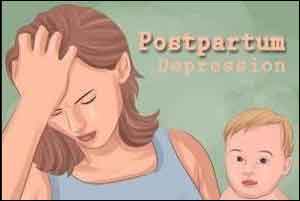- Home
- Editorial
- News
- Practice Guidelines
- Anesthesiology Guidelines
- Cancer Guidelines
- Cardiac Sciences Guidelines
- Critical Care Guidelines
- Dentistry Guidelines
- Dermatology Guidelines
- Diabetes and Endo Guidelines
- Diagnostics Guidelines
- ENT Guidelines
- Featured Practice Guidelines
- Gastroenterology Guidelines
- Geriatrics Guidelines
- Medicine Guidelines
- Nephrology Guidelines
- Neurosciences Guidelines
- Obs and Gynae Guidelines
- Ophthalmology Guidelines
- Orthopaedics Guidelines
- Paediatrics Guidelines
- Psychiatry Guidelines
- Pulmonology Guidelines
- Radiology Guidelines
- Surgery Guidelines
- Urology Guidelines
Women who deliver in winter or spring less likely to have postpartum depression

Women who give birth in winter or spring are less likely than women who deliver in the fall or summer to suffer from postpartum depression (PPD), suggests a study being presented at the ANESTHESIOLOGY® 2017 annual meeting.
The study also found that women who delivered babies at a higher gestational age (further along in their pregnancy) were less likely to develop PPD, and women who did not have anesthesia, such as an epidural, during delivery had an increased risk. The authors said women who did not have anesthesia may have been at an increased risk for PPD because the pain associated with labor may have been traumatizing to the women during delivery, or it's possible those who declined anesthesia just happened to have intrinsic characteristics that made them more vulnerable to experiencing PPD.
Caucasian women had a lower risk of PPD compared to women of other races. Additionally, increased body mass index (BMI) was associated with an increased risk of PPD. There was no association found between delivery mode and PPD.
"We wanted to find out whether there are certain factors influencing the risk of developing postpartum depression that may be avoided to improve women's health both physically and mentally," said lead study author Jie Zhou, M.D., of Brigham & Women's Hospital in Boston.
At least 10 percent of women suffer from anxiety or depressive disorders following childbirth. Symptoms of PPD include sadness, restlessness and/or agitation and decreased concentration. PPD typically arises from a combination of hormonal changes, psychological adjustments to motherhood and fatigue. Left untreated, PPD can interfere with mother-child bonding and cause distress to the mother, baby and the entire family.
The study included a review of medical records of 20,169 women who delivered babies from June 2015 through August 2017. A total of 817 (4.1 percent) women experienced PPD.
While the study did not examine why certain factors might influence the development of PPD, Dr. Zhou said the higher the gestational age, or the further along a woman is in her pregnancy, the more mature typically the baby will be at delivery. "It is expected that the mother will do better and be less mentally stressed when delivering a mature, heathy baby," he noted.
Additionally, the authors suggest the protective mechanism seen for women delivering in winter and spring may be attributed to the seasonal enjoyment of indoor activities mothers experience with newborns, but say outdoor activities, although not as convenient, with newborns are also good, as this will help to increase sun exposure.
"The significant difference in the risk of developing PPD between Caucasian and other populations may be due to differences in socioeconomic status among these ethnicities," he noted. "While women with increased BMI needed more hospital-based maternal outpatient follow-ups and had more pregnancy-related complications, which could affect maternal outlook."

Disclaimer: This site is primarily intended for healthcare professionals. Any content/information on this website does not replace the advice of medical and/or health professionals and should not be construed as medical/diagnostic advice/endorsement or prescription. Use of this site is subject to our terms of use, privacy policy, advertisement policy. © 2020 Minerva Medical Treatment Pvt Ltd